Camp Washington, Spring Grove Village, and Winton Hills
- Anthony Gustely

- Nov 29, 2020
- 6 min read

Long time no see! It's been exactly two weeks since Week 9 of 52 First Impressions, and I'm happy to say I'm now COVID-19 free and ready to continue exploring Cincinnati! This week I wrapped up the West Side, visiting Camp Washington, Spring Grove Village, and Winton Hills. Nicole tagged along for another week of adventuring: I think it's the planner in us that enjoys the constant exploring. The neighborhoods this week are all relatively different: Camp Washington is primarily industrial, Spring Grove is a mix between industrial, residential, and the Spring Grove Cemetery, and Winton Hills is mostly public housing and then industrial along the edge. Let's get into it!
Camp Washington
Mill Creek and rail lines to the west, I-75 to the East. Camp Washington is a residential/industrial neighborhood with a population of 1,343 (11th smallest). During the Mexican-American war (1846 – 1848), Camp Washington was actually used as a training base for the military. The base trained 5,536 soldiers for battle. Although there are around 150 companies housed in Camp Washington, the neighborhood also has a collection of 19th century historical homes to its name. Check out this article for a photographic walking tour of the neighborhood!
Our stop in Camp Washington was at the American Sign Museum. Reopened in May 2005 as the American Sign Museum, the location is the largest public museum dedicated to signs in the United States. The signs displayed span over 100 years of history, and the rooms and displays themselves are separated into different time periods and sign styles.
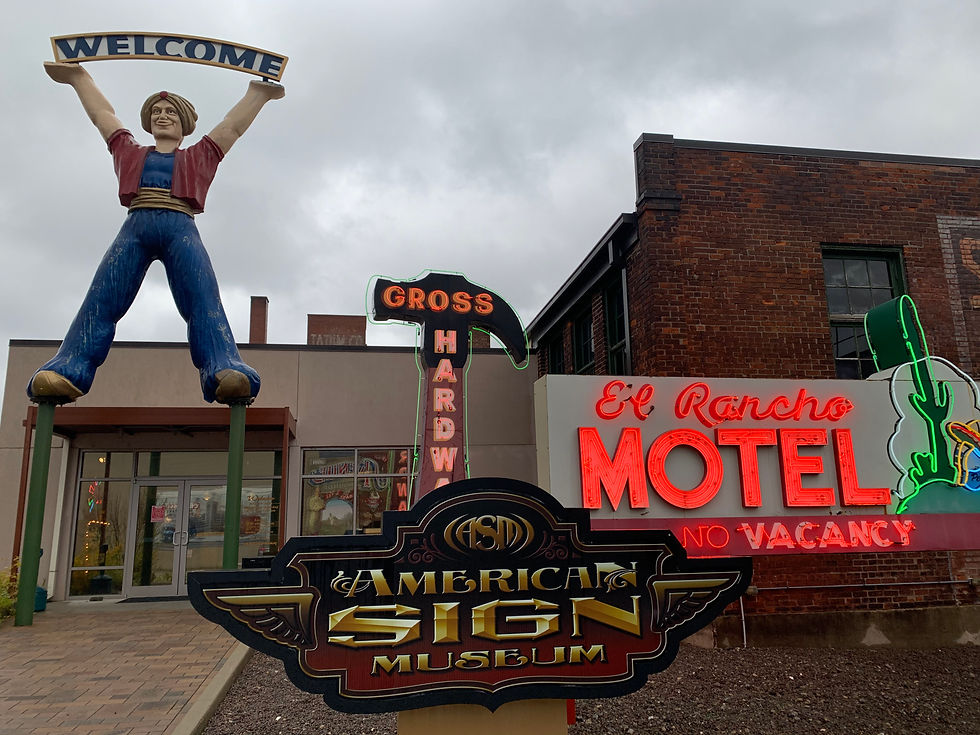
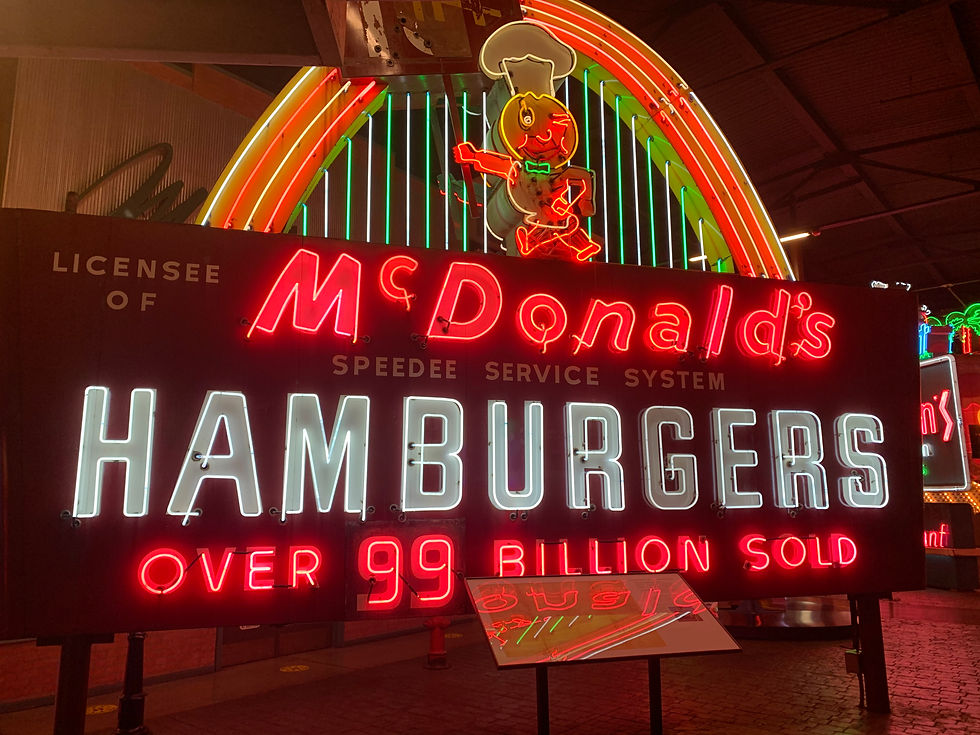
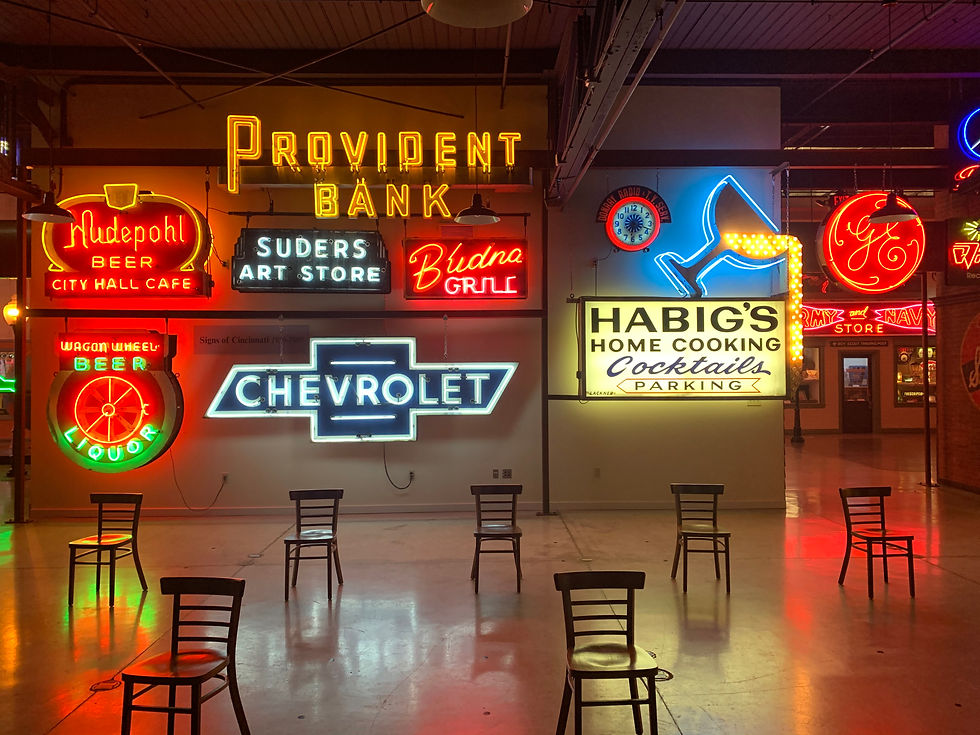
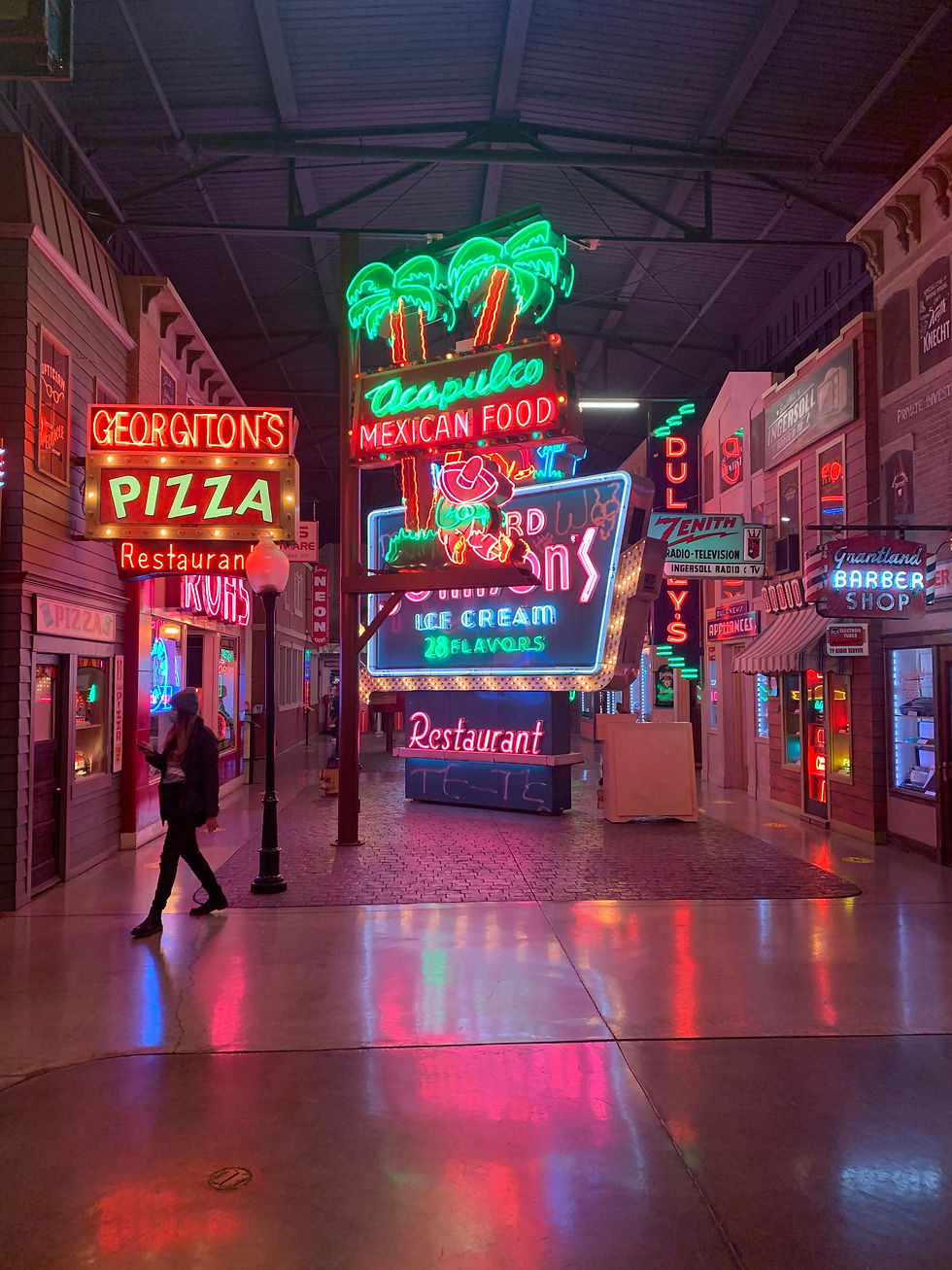
The Museum was incredibly interesting and exciting to walk through. My favorite area had to be the center of the museum, pictured in the bottom left of the four photos. The exhibit is set up to look like a mock-city street of the past, dotted with signs everywhere. Aside from the uncharacteristic amount of neon signs everywhere, the street immersed us into history: it felt like Nicole and I were in the 1950s, strolling along a street at night. I highly recommend visiting the American Sign Museum at least once in your life: it's a Cincinnati icon! They offer a student discount on admission as well, taking the cost down from $15 to $10.
Although the Museum is the only place Nicole and I visited in Camp Washington, the neighborhood is alive with plenty of additional attractions for visitors! Camp Washington Chili is another quintessential Cincinnati joint, serving up Cincinnati-style chili since 1940. There are also several art galleries in the neighborhood, including CampSITE Sculpture Park, an outdoor, social pocket park that contains contemporary sculpture art. The Camp Washington website is a great place to learn more about the community. They're civic engagement/organizational strength seems pretty robust: the neighborhood has their own housing revitalization program (Camp Washington Community Board), Community Council, Community School, and Urban Farm!
I'd characterize Camp Washington as a unique, re-emerging neighborhood that has a lot of potential. There are vacant parcels, vacant buildings, a growing artist presence, and strong community voices that are opportunities for this neighborhood. It's close enough to University of Cincinnati's campus that college students can visit, but not too disconnected from the core that it's inaccessible.
Spring Grove Village (Winton Place)
Spring Grove Village, formerly known as Winton Place, has a population of 1,964 residents (similar to Camp Washington). Geographically, it's bordered by I-75 and Mill Creek to the south, Winton Hills to the east, Northside to the west, and College Hill to the north. Historically known as the Mill Creek Township Farm and Spring Grove areas, Spring Grove Village was incorporated in 1882 and then annexed to the City of Cincinnati in 1903. The neighborhood's crowned jewel is the Spring Grove Cemetery.
Spring Grove is interesting because only a fragment of its land area has actually been redeveloped since the neighborhood's origins. There are essentially three different types of built environments in Spring Grove. Because the enormous Spring Grove Cemetery consumes the left side of the neighborhood, the intersection of Spring Grove Avenue and West Mitchell Avenue has been the crux of all development within the neighborhood.
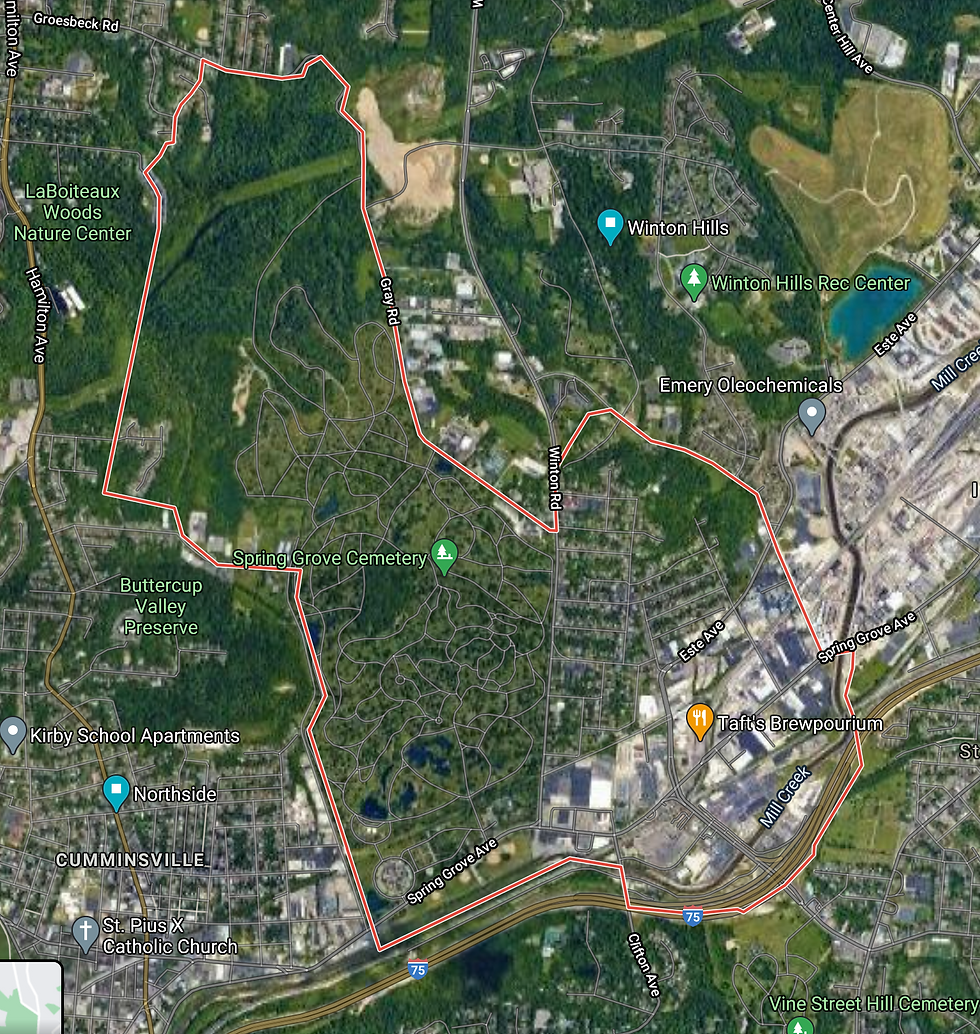
The built environment in the southeastern portion of Spring Grove includes large parcels, lots of concrete, warehouses, and parking lots. The northeast portion of the neighborhood is starkly different, with dense single family housing and tree-lined streets. Even more lush is the Spring Grove Cemetery, which is characterized by rolling hills, looming trees, and beautiful small buildings with ornate detailing.
Before venturing into the cemetery, Nicole and I decided to grab some takeout at Taft's Brewporium. An industrial warehouse, Taft's serves up their signature pizza and beer. I ordered a small cheese pizza and Nicole had fried mushrooms with marina. Both were amazing! My pizza was crispy on the bottom and had both mozzarella and a sharper pecorino romano on it. Although the building is pretty unassuming from the outside, I would definitely consider coming back to Taft's to sit down in their restaurant and have a drink with friends.
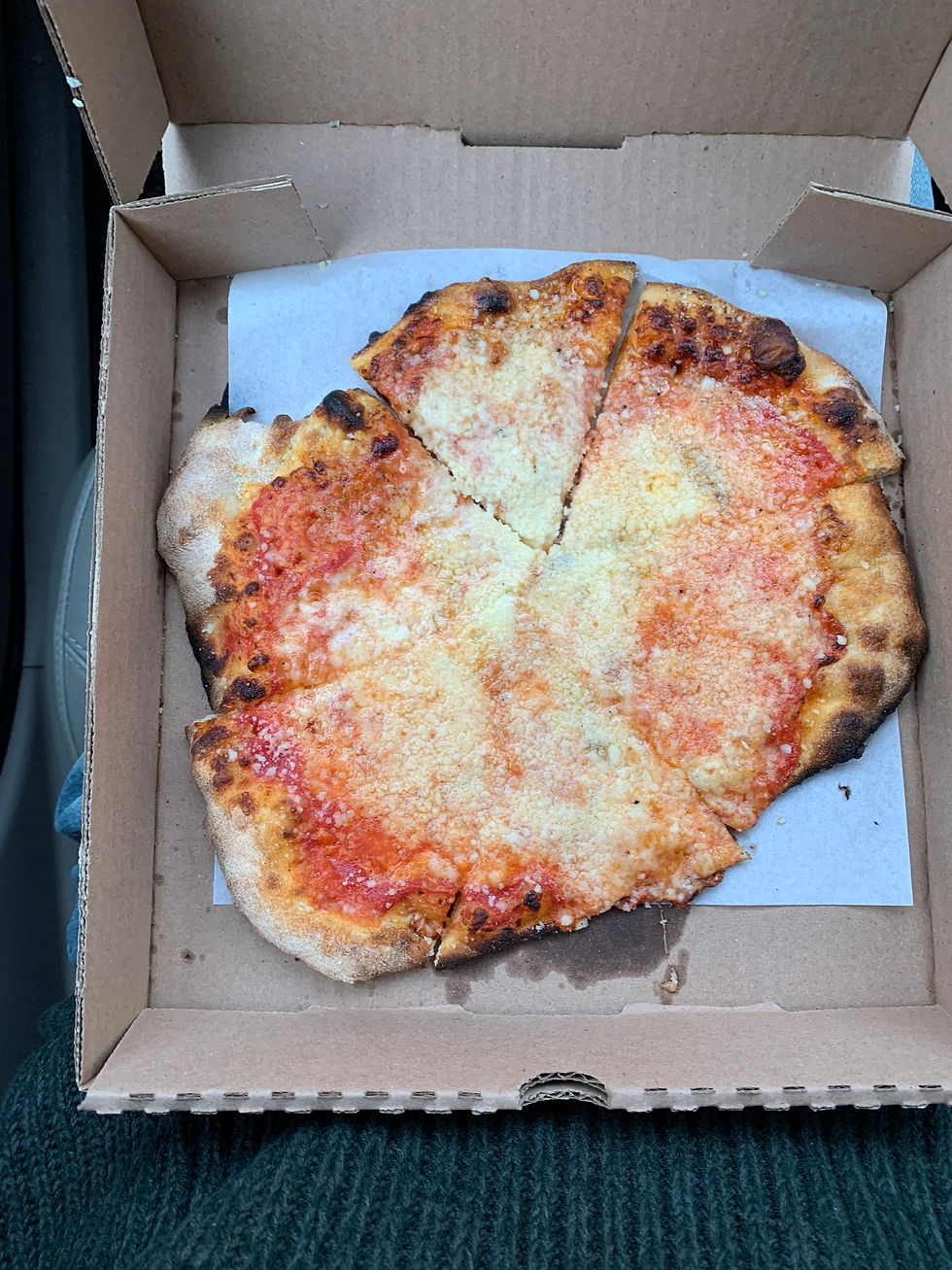
There's nothing like eating takeout in your car, parked in the middle of a cemetery <3 . For real though, the idea sounded better to Nicole and I in theory because we thought we could multitask, but it didn't work out the best.
The Spring Grove Cemetery opened in 1845 as a solution to the cholera epidemic. Cincinnatians were concerned with a lack of proper internment services within the City, so they sought out enough land that could provide burials for the indefinite future. Today, the cemetery in 733 acres in area, with only 450 of those acres in use (landscaped and maintained).
"Since its founding over 150 years ago, Spring Grove has remained a leader in cemetery design and management. The landscape "lawn plan" concept was created here. Although it was considered a radical concept of cemetery design at that time, it later became accepted almost universally as the model plan. Spring Grove remains a masterwork of the landscaping art, studied by horticulturists and admired by thousands of visitors."
Spring Grove is a must. see. Nicole and I drove around for around 30 minutes and in that time span we didn't even get to see everything the Cemetery truly has to offer. Even on the cloudy that it was, the amount of monuments, small churches, and mausoleums that we saw were stunning!


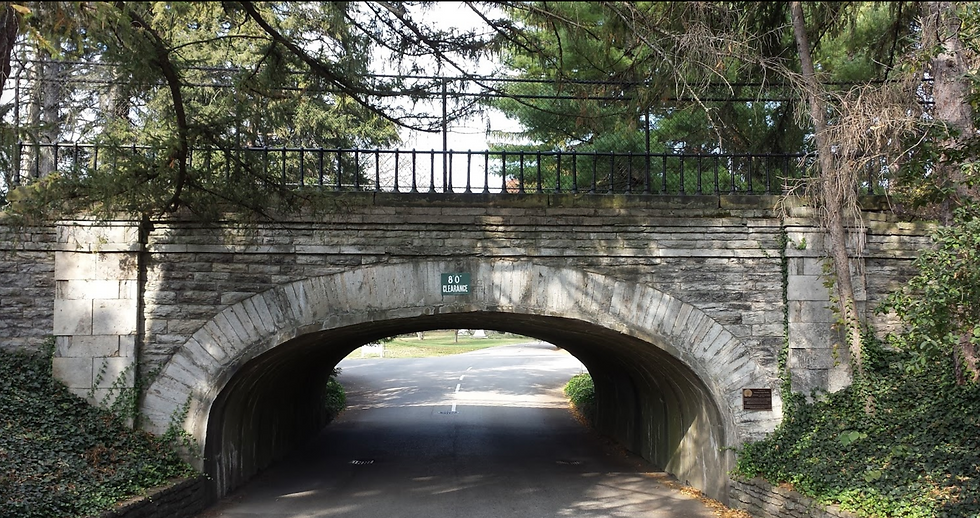

Winton Hills
Winton Hills is a neighborhood of primarily public housing with a population of 4,787 residents. The two main housing projects, Findlater Gardens and Winton Terrace, are often considered collectively to be the Winton Terrace area. When Winton Terrace opened in 1940, only white families were eligible to live there. Winton Terrace only became open to African American families because Findlater Gardens opened for white families to live. The segregation was short lived: in 1965, Winton Terrace area was 95% African American.
Winton Terrace a prime example of how environmental racism covertly succeeds in the systems of public housing and placing industrial land uses. Environmental racism is defined as "the institutional rules, regulations, policies or government and/or corporate decisions that deliberately target certain communities for locally undesirable land uses and lax enforcement of zoning and environmental laws, resulting in communities being disproportionately exposed to toxic and hazardous waste based upon race." Winton Terrace is located across from 6 industrial plants. Collectively, these plants account for 38% of Cincinnati's toxic emissions into the atmosphere. Between 2015 and 2018, three of these plants had been accused by the EPA of violating the Clean Air Act. In 2016, Winton Hills sat in the zip code with the highest emissions in the City.
It's important to note that Winton Terrace was built after these industries were located along the Mill Creek. The scary reality is that these industries are polluting less now than they did historically, which means that despite how many people the air effects now, it had been at higher levels and having worse effects in the past. Residents themselves experience the real-time effects of the pollution. This article goes into depth with resident accounts of the impacts the air has had on their families. Mothers carrying around several inhalers for their children with asthma, a young girl who has to shut her windows because she can't breathe: we take these things for granted because many of us have never had to worry about living and breathing toxic air every day. Winton Hills ranked 14th out of 91 neighborhoods in Hamilton County for asthma hospitalizations.
We opted not to take photos of the residences in Winton Hills as to be sensitive to the privacy and optics of us being there. It had begun to rain anyways, so I'm not quite sure the pictures would have been useful to explain how the neighborhood is set up. I will include a picture of the Winton Terrace housing and Findlater Gardens housing below. Similar to the Villages at Roll Hill public housing, the homes are within larger "pod" structures that face the road. There are several units within each larger structure:
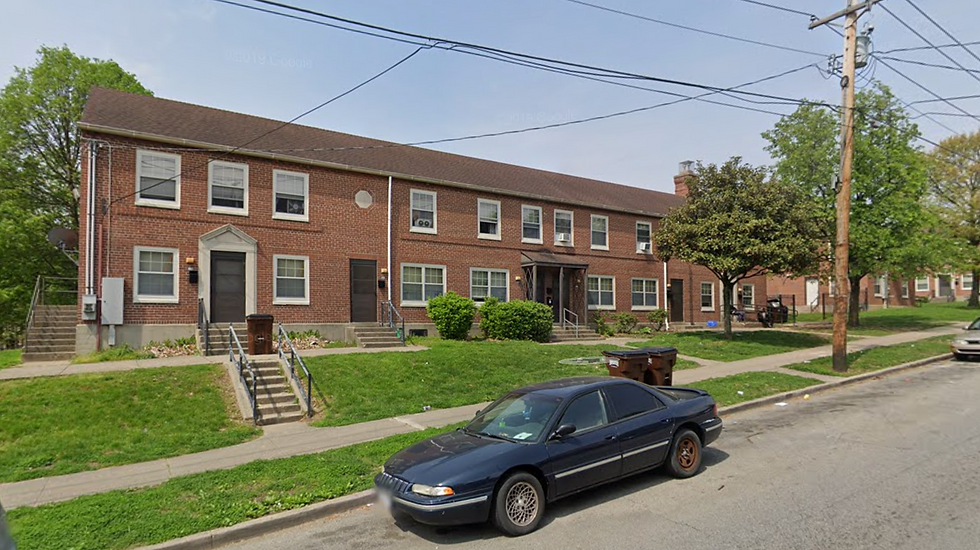
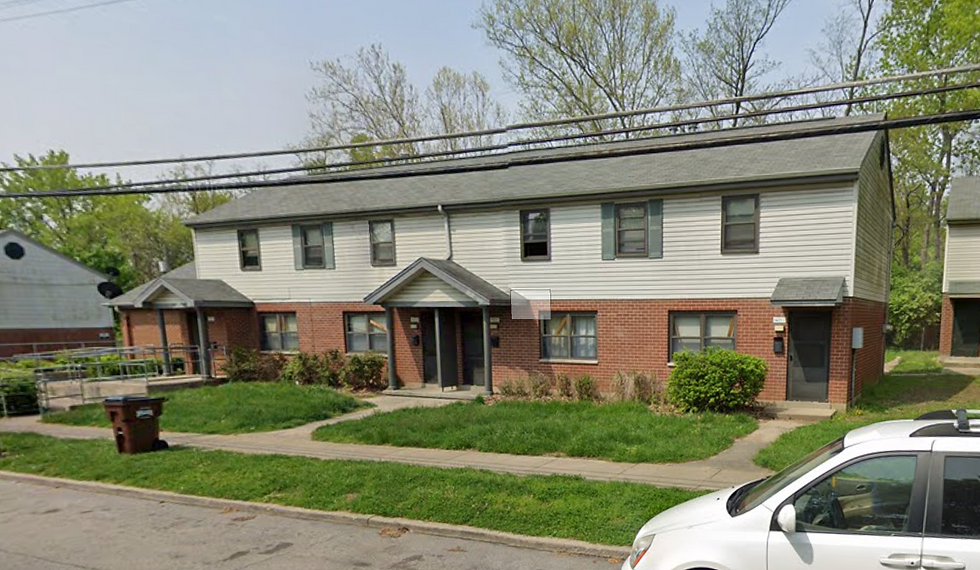
In all honesty, it feels awkward and ill-fitting to make conclusions about neighborhoods in the first place. I think one recurring theme I've been seeing, however, is that the neighborhoods that are thriving are the ones that are more complete with residential, commercial, open space, with some necessary land dedicated to industrial use. Public housing in Cincinnati has proven to be a failure thus far, from what I've observed. In Winton Hills, residents want out because of the environmental concerns. Public housing is one piece of the vicious cycle of poverty, and it promotes spatial segregation by clustering specific income groups together (suburban clusters with six-figure price points do this too, there's just not as many of these within City limits).
I'll see you next week, where we explore Clifton and CUF right in my backyard!







Comments